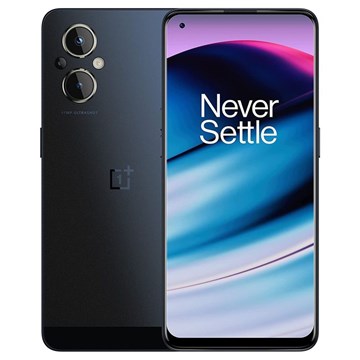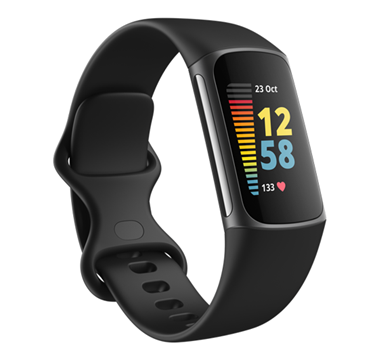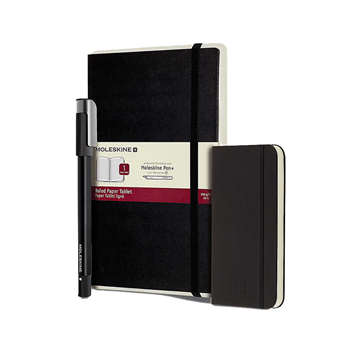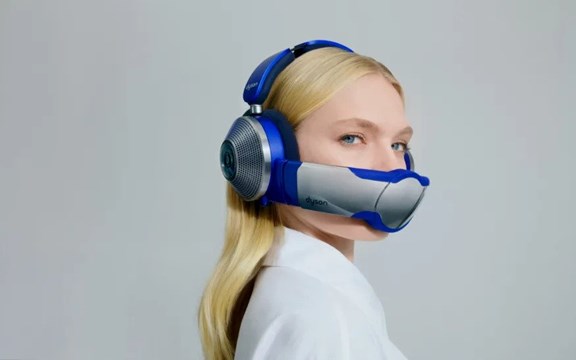There are around 55 species of sea snakes which are found in the seas of the world but in the coastal waters of Pakistan, only 14 species have so far been recorded. Sea snakes include the group of poisonous snakes which have fangs that are fixed in front of the upper jaw. This type of fang is called Proteroglyphous. On land, poisonous snakes. Cobra and Krait, have such fangs. Another type of fang called Solenoglyphous does not exist in sea snakes as it is characteristic of Vipers.
Sea snakes produce venom from a poison gland that acts on the victim's nervous system. Its poison contains neurotoxin operating on the nerve cells of the victim. Neurotoxin paralyses the respiratory system, ultimately causing death. The phenomenon is the same as in the case of Cobra and Krait poisoning. However, the poison of a sea snake is severer than that of a Cobra or a Krait.
The following characteristics distinguish the sea snakes from the land snakes:
1. Laterally compressed fin-like tail.
2. Body is flattened side to side, accompanied by loss of ventral plates.
Their nostrils are directed upwards and can be closed tightly to exclude water. Sea snakes feed on fish, crabs and weeds. Breeding takes place mostly during March - April. All sea snakes are viviparous, and the number of their young ranges from 2 - 17. Sea snakes come to surface for respiration. They can live in the sea from 2 to 8 hours.Their left lung is larger and is almost equal to the
length of their body (except the tail). The posterior part of the lung is used for swimming and balancing the body. Thus its function is similar to that of the swim bladder of a fish.
All sea snakes, except Pelamisplaturus, are found in the tropical parts of India and the Pacific Ocean. Pelamus platurus is found beyond these limits.
Identification:
Identification of living sea snakes in the water is usually based on their colour pattern, habitat, and behaviour. This requires practice and experience. In the laboratory, snakes are identified according to the number and characteristics of the scales on their head, body, belly and tail.
Economic importance:
1) The skin of sea snakes is very much valued in Hong Kong and Singapore
because of its use in bags, shoes and purses etc.
2) They are sometimes used for human consumption. Sea snakes are sold in
the fish market at Hai-ho" (Haiman), where they are chopped up to make
sausages and are eaten by the natives of Tahiti in the South Pacific.
3) The poison extracted from sea snakes is used to prepare anti-venom in
many countries. In Pakistan, however, sea snakes are neglected.Those
caught during fishing are destroyed, killed, and thrown away.
Species:
Enhydrina schlstosa
Beaked Sea Snake
Identification characteristics: Tip of the upper jaw protruding in a hook over the lower jaw. Mental shield elongated and concealed in cleft, colour dirty white to pale greenish gray. There are 40 - 50 dark round blotches on the back, with age bands remaining dorsally, their scales are granular and the total length range is 470 - 1162mm.
Distribution: Sindh and Balochistan coast.
Habitat:lt is found in deep sea, where the bottom is sandv or rockv. It is also seen in tidal creeks and other sheltered spots during monsoon.
Status: Commonest of all sea snakes.
Lapemis curtus (Shaw)
Short Sea Snake
Identification characteristics: The only sea snake with parietal shield on head broken up into small pieces. It is a small snake with stout cylindrical body compressed posteriorly, with 45 to 55 series of dark greenish brown, crose bare. Snout Vent length recorded 676 - 900 mm.
Habita:. lt inhabits the rocky coast and visits the surface to take fresh air.
Status: Most common snake.
Distribution: This species is common along the western Mekran Coast and Manora but rare in Karachi.
Praescutata viperlna (Schmidt)
Viperine Sea Snake
Identification Characteristics: Ground colour pale peach to greenish white, 25 to 35 rhomboid dorsal blotches fused along midline. Its head is short, distinct from the neck. Its body is cylindrical anteriorly and compressed posteriorly, ventral 181-2911, anterior ones half of the width of body. white throat, black tail.
Size: 860 to 970 mm.
Habitat: It inhabits the coastal water and creek.
Status: Less common
Distribution: Recorded in Sindh and Balochistan coasts.
Microcephalophis gracllis gracilis (Shaw)
Common small headed sea snake
Identification Characteristics: Body is long, slender anteriorly, much compressed posteriorly, its greatest diameter being 4-5 times that of the neck. 40-60 bands posteriorly, with age the markings disappear. Adult is usually grayish above, paler below, ventrals at mid body divided numbering fewer than 350.
Size: 1265 mm to 1490 mm .
Habitat: It inhabits sandy bottoms and muddy mangrove swamps.
Status: Rare
Distribution: Balochistan Coast.
Microcephalophis cantorls
Cantor small-headed sea snake
Identification Characteristics: Anterior half of body is light olive to yellow, getting paler below. Posterior half body dark olive above, yellowish laterally, body with 49 -61 gray to blackbars, ventrals 393 -404.
Size: 1155-1520 mm
Habitat: Shallow water with muddy and sandy bottom.
Status: Rare
Distribution: Balochistan Coast.
Pelamis platurus (Linnaeus)
Pelagic Sea Snake
Identification Characteristics: A small snake with elongated, depressed head. Snout long. Ground colour yellow. Scale rows at mid body 47-63. Ventrals at mid-body divided.
Size: 535 mm to 880 mm
Habitat: It spends long hours on the surface and is active in water when its temperature is above 25 degree centigrade. It inhabits coastal waters.
Status: Common
Distribution: Sindh and Balochistan coasts.
Hydrophls cyanocinctus roaudin)
Annulated Sea Snake
Identification Characteristics: Head moderately broad, slightly depressed; body cylindrical. There are 41-70 block bandswhich expand vertebrally. Head is black withhorse-shoe shape marked on crown. Bands wider than interspace between them. Scales rows onbneck 29-35, on mid body 37-47; ventrals 290-390.
The length of specimens ranged from 850-1185 mm.
Habitat: It inhabits shallow, muddy and mangrove swamps during monsoon.
Status: Common
Distribution: Sindh coast (coastal areas of Karachi); Balochistan coast (Makran coast, Shimal Bandar).
Hydrophls splralis (Shaw)
Yellow Sea Snake
Identification Characteristics: Head large and broad body olivaceous dorsally, merging in yellow ventrally and is adorned with 34-70 black bands, which are narrower than the spaces between them. Scale rows on midbody 37-41, ventrals 266 to 368. Length of the snake ranged 1145-1500 mm.
Habitat: It inhabits off-shore water.
Status: Less common.
Distribution: In Sindh it is abundant along the coast of Karachi.
Hydrophis ornatus ornatus (Gray)
Cochin banded sea snake
Identification Characteristics: Head elongated and slightly depressed. Body anterior cylindrical, posteriorly compressed and heavy; the body dorsally olivaceous, whitish ventrally; 41-45 black cross bars; scale rows on body 33 to 55, ventrals 209 to 312. Ventral shield twice as broad as the adjoining Scales. Length of specimens ranges from 1065 mm to 1822 mm; juvenile 310 mm.
Habitats: Mangrove swamp.
Status: Rare.
Distribution: Recorded from Pakistan near coast of Astola Island and Karachi coast near Hawksbay.
Hydrophis mamlllarls (Daudin)
Identification Characteristics: Adult has a very small head, elongated, depressed, body is yellowish or grayish, tail is black with six or more light rings. Scale rows at mid body 31 to 40; ventrals 302 to 390. Total length 655 mm to 1150 mm.
Habitat: it inhabits muddy mangrove swamp and sandy beaches.
Status: Rare
Size: 535 mm to 880 mm
Distribution: Recorded in Sindh from Karachi coast and in Balochistan Sonmiani beach.
Hydrophis fasciatus fasclatus(Schneider)
Small headed banded sea snake
Identification Characteristics: Head very small, body long, slender anteriorly; 488 to 71 black bands. Scale rows on mid body total length range 470-1200 mm.
Habitat: It inhabits shallow water where the bottom is sandy or rocky.
Status: Rare.
Distribution: Sindh and Balochistan coast.
Hydrophls caerulescens caerulescens (C. Shaw)
Many toothed sea snake
Identification Characteristics: Head small; anterior part of body is slender; body bluish or grayish blue dorsally, yellow ventrally; 35 to 58 deep bluish black bands; scale rows at midbody 38-54, ventrals 253-334. Total length of our spec-
imen 705 mm -1210 mm.
Habitat: It inhabits muddy creeks with mangrove swamps.
Status: Rare.
Distribution: Sindh: Karachi
Hydrophis lapemoldes (Gray)
Persian Gulf sea snake
Identification Characteristics: Head olive brown; body elongated, slender anteriorly; top of the head has curved yellow marks, 45 black bands uniting at the ventral side. Scale rows on neck 29-35; midbody 43-51; ventrals 314-372. Snout-Vent length of our specimens ranged 685 mm to 1130mm.
Habitat: It inhabits muddy mangrove swamps.
Status: Less common.
Distribution: Balochistan Mekran Coast), Sindh (Hawksbay).
Astrotia stokesi (Gray)
Large-headed sea snake
Identification Characteristics: Head large; body stout and cylindrical anteriorly; ground colour yellowish or pale brown; head dark olivaceous; body with broad black or dark brown bands which are 32-34 in number. No specimen has been collected.
Source:
Please rate this
Poor




 Excellent
Excellent




 Excellent
Excellent
Votes: 0 |NaN out of 5






